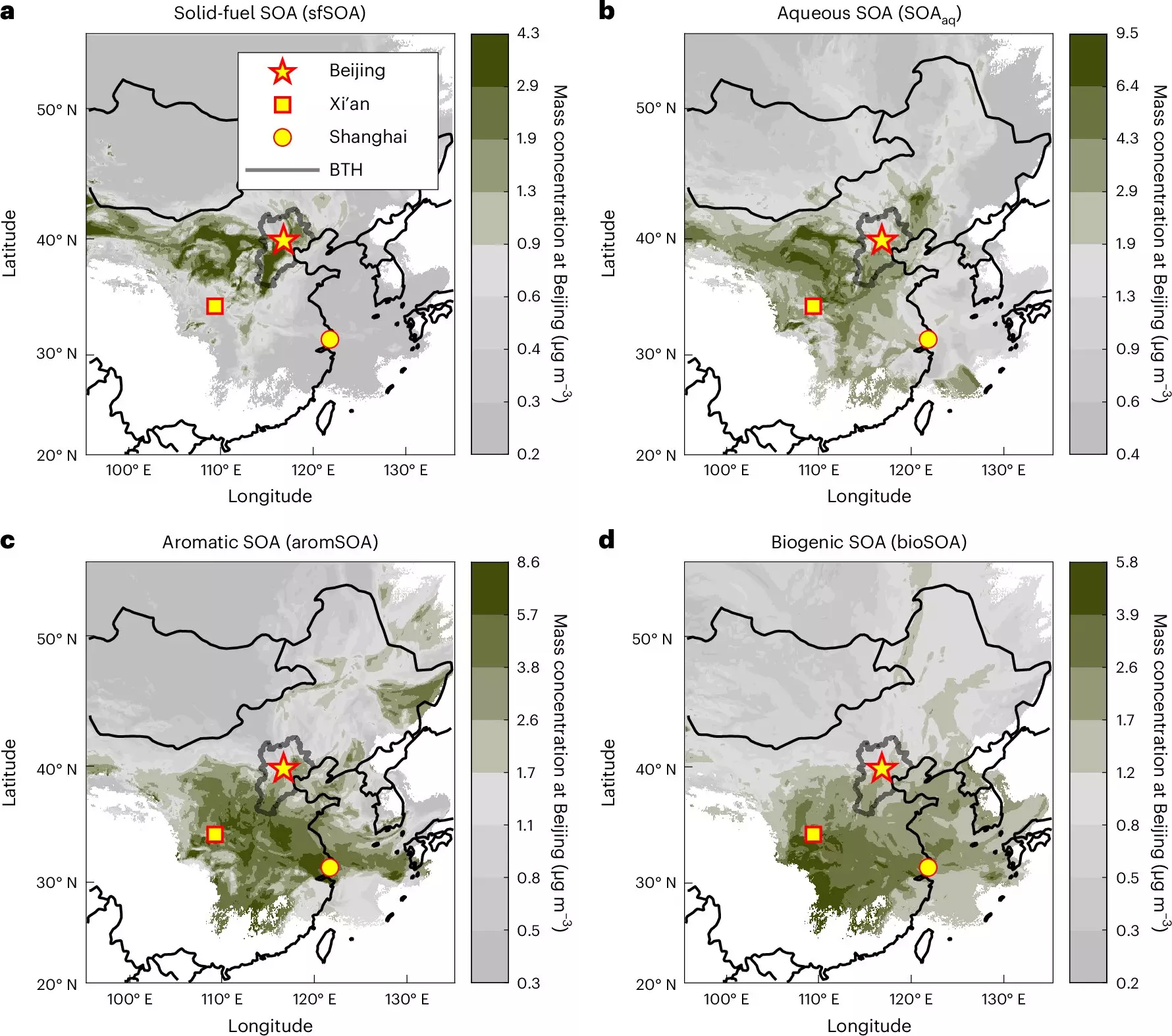As cities around the world become increasingly suffocated by air pollution, research into sources and solutions for smog has never been more critical. A groundbreaking study led by the Paul Scherrer Institute (PSI) aims to enhance our understanding of aerosol pollutants, particularly in Beijing, a city notorious for its air quality issues. Air pollution, responsible for millions of deaths annually, is a pressing public health concern, and discerning the origins of these pollutants is vital for effective mitigation strategies. The study—the collaborative brainchild of international experts—promises to deliver much-needed insights into the complex ecosystem of air pollution in urban environments.
Central to this research is the novel use of a mobile aerosol mass spectrometer, which allows scientists to analyze aerosol compositions at an unprecedented molecular level. Such technological advancements represent a significant step forward in environmental science, shedding light on the intricacies of smog formation. Kaspar Dällenbach, an environmental scientist leading the study, emphasizes that this innovative approach opens new frontiers in comprehending both the sources and the chemical processes contributing to smog in Beijing. As researchers collect real-time data on air composition, they can distinguish between primary aerosols—those released directly into the atmosphere—and secondary aerosols, which form through various atmospheric processes.
This dual approach to understanding aerosols is particularly beneficial for a city like Beijing, where pollution levels fluctuate both seasonally and geographically. The team’s findings, published in the journal Nature Geoscience, indicate that air quality is influenced by multiple sources, and these vary significantly between summer and winter months.
Throughout the study, significant seasonal variations in the origins and compositions of pollution were noted. During the winter months, the focus shifted toward local sources, predominantly from the combustion of wood and coal in the Beijing-Tianjin-Hebei region. This highlights the crucial link between energy consumption practices and air quality, underscoring the need for transitional energy policies and cleaner combustion technologies.
Conversely, summer air quality was found to be greatly influenced by pollution coming from urban emissions across a larger geographical area, particularly winds carrying pollutants from industrial and vehicular sources in regions stretching from Xi’an to Shanghai. This revelation implicates broader regional dynamics that contribute to Beijing’s smog and suggests that air quality management must extend beyond city boundaries. As Dällenbach noted, the study underscores that pollution is a regional issue, requiring coordinated efforts across multiple jurisdictions.
One of the most formidable challenges facing air quality researchers has been the complex nature of aerosol formation and transport. Traditional methodologies may present blurring in identifying the original sources of air pollutants, impeding precise attribution. However, this recent research overcomes such hurdles, demonstrating the capacity to dissect the origins of pollutants amid the chaotic cocktail of chemicals that comprise urban smog. By analyzing these aerosols on a molecular level, researchers can delve into the chemical changes that occur as pollutants travel, allowing for a more nuanced understanding of their pathways and interactions.
Given the intricate web of sources contributing to air pollution, Dällenbach’s work emphasizes a significant takeaway for policymakers: improvements in air quality depend on a keen understanding of transport dynamics and a unified commitment to address pollution collaboratively across regions. It is evident that localized strategies alone cannot combat the pervasiveness of smog that results from multifaceted sources.
The implications of this research extend beyond Beijing and potentially offer avenues for addressing air quality issues worldwide. The methodologies developed during this study not only serve local purposes but can be adapted to explore smog patterns and pollution sources in other regions, including cities in Europe and emerging urban centers in the Global South.
As the research community moves forward, the hope is that such knowledge will precipitate concrete actions targeting pollution reduction, informed by the new measurements and analyses that this study has provided. Ultimately, a clearer understanding of smog dynamics holds the potential to safeguard millions of lives from the adverse impacts of air pollution, reaffirming that in our fight against smog, knowledge is an indispensable ally.

